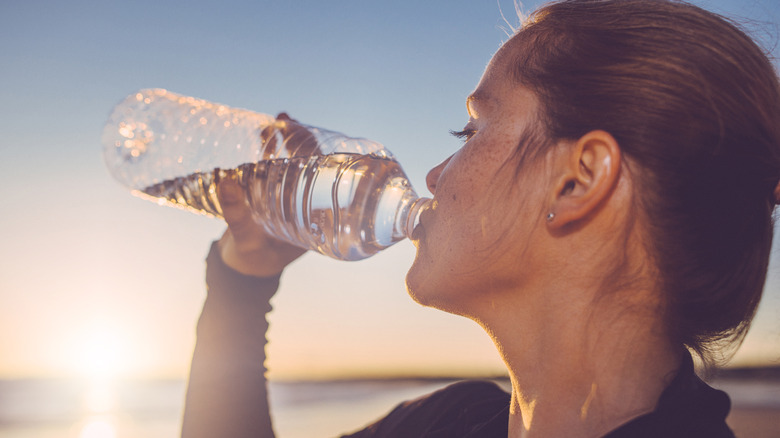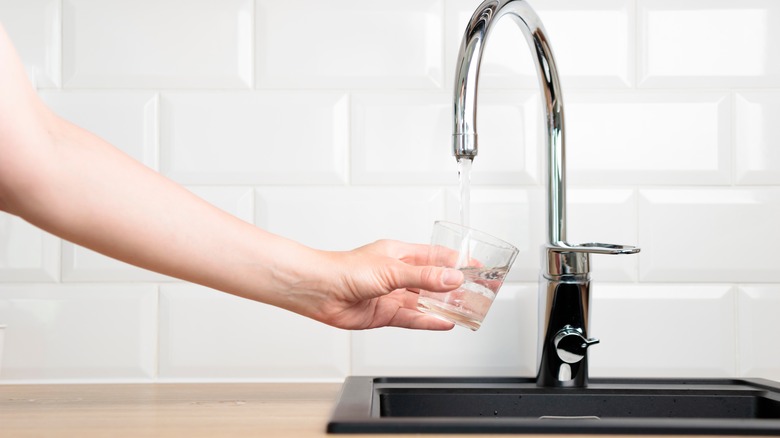Source Matters When It Comes To Picking The Best Tasting Bottled Water
Part of what makes a cool drink of water so delicious at the right moment is the purity. After all, water is life – and it's the key element that makes it possible. Clean water then becomes one of the healthiest things you can put in your body, improving blood oxygen circulation, regulating body temperature, boosting energy, and so much more. However, this all comes with one huge asterisk — the source of the water. If compromised, the water may cause the opposite effects, even sickness and death. Thankfully, most people in the world can access safe drinking water, but that often comes at a cost to taste, thanks to chemicals added to the water, minerals already present, and the material and age of the pipes that carry it.
That's pushed many people to rely on bottled water for most of what they drink, creating an over $300 billion industry in the United States alone that looks to get bigger with each passing year. This gives consumers near endless options, but determining the best tasting — and healthiest — one depends on seeking the source, especially given that, acording to a 2024 study conducted by the Environmental Working Group (via the New York Rural Water Association), about 64% of bottled water is just tap water, including popular bottled water brands brands like Dasani, Lifewtr, Nestlé Pure Life, Propel, and Essentia, not to mention Niagara Bottling, the brand behind Costco's Kirkland bottled water. That's why you want to look for a natural source on the label, such as a spring, glacier, or aquifer. With these, Mother Nature does the filtering, while often adding bonus material along the way.
Tap, purified, and spring — the difference is in the taste
Taste is personal, and that applies to bottled water, too. That's because the water changes the salt concentrations on your tongue and interacts with chemicals in your saliva, including magnesium and calcium, creating multiple taste interpretations of the same bottle of water by different people. Tap water's flavor is further impacted by the added chemicals required to make it safe, including chlorine and ammonia. The minerals in the source water can contribute, too, as can metals and materials leached along its journey through pipes, particularly copper and iron.
That's why infrastructure makes a huge difference, with aging systems sometimes pouring out tap water that looks "like urine" and "smell[s] like the sewer," as Flint, Michigan, resident Ashley Holt told The Detroit News during the 2015 water crisis there. Keep in mind that plastic can also impact flavor. When heated, plastic bottles can leach microplastics and chemical compounds into the water. This makes it essential to avoid the worst places to store bottled water.
"Purified" means that the water has gone through reverse osmosis to filter out chemicals, microbes, and minerals, and has possibly undergone additional processes such as deionization, ultraviolet light disinfection, or ozonation. While that translates to peace of mind, it may not ensure a good taste or refreshing effect, as purified water has a more neutral taste, due to the absence of flavorful minerals lost during purification. Water bottled at the source, then, becomes the ideal, as certified spring water is cleaner, better tasting, healthier, and more refreshing, thanks to the natural minerals inside.

